What is IMO?
The International Maritime Organization is a specialized agency of the United Nations which is responsible for measures to improve the safety and security of international shipping and to prevent pollution from ships. It is also involved in legal matters, including liability and compensation issues and the facilitation of international maritime traffic. It was established by means of a Convention adopted under the auspices of the United Nations in Geneva on 17 March 1948 and met for the first time in January 1959.
It currently has 175 Member States. IMO’s governing body is the Assembly, which comprises all the Member States and normally meets once every two years. It adopts the budget for the next biennium together with technical resolutions and recommendations prepared by subsidiary bodies during the previous two years. The Council, of 40 Member States elected by the Assembly, acts as the governing body in between Assembly sessions. It prepares the budget and work programme for the Assembly. The main technical work is carried out by the Maritime Safety, Marine Environment Protection, Legal, Technical Co-operation and Facilitation Committees and a number of sub-committees. The IMO slogan sums up its objectives: Safe, secure and efficient shipping on clean oceans.
As a specialized agency of the United Nations, IMO is the global standard-setting authority for the safety, security and environmental performance of international shipping. Its main role is to create a regulatory framework for the shipping industry that is fair and effective, universally adopted and universally implemented. In other words, its role is to create a level playing-field so that ship operators cannot address their financial issues by simply cutting corners and compromising on safety, security and environmental performance. This approach also encourages innovation and efficiency.
Shipping is a truly international industry, and it can only operate effectively if the regulations and standards are themselves agreed upon, adopted and implemented on an international basis. And IMO is the forum at which this process takes place. International shipping transports more than 80 per cent of global trade to peoples and communities all over the world. Shipping is the most efficient and cost-effective method of international transportation for most goods; it provides a dependable, low-cost means of transporting goods globally, facilitating commerce and helping to create prosperity among nations and peoples.
The world relies on a safe, secure and efficient international shipping industry – and this is provided by the regulatory framework developed and maintained by IMO.
IMO measures cover all aspects of international shipping – including ship design, construction, equipment, manning, operation and disposal – to ensure that this vital sector remains safe, environmentally sound, energy-efficient and secure. Shipping is an essential component of any programme for future sustainable economic growth. Through IMO, the Organization’s Member States, civil society and the shipping industry are already working together to ensure a continued and strengthened contribution toward a green economy and growth in a sustainable manner. The promotion of sustainable shipping and sustainable maritime development is one of the major priorities of IMO in the coming years.
As part of the United Nations family, IMO is actively working towards the 2030 Agenda for Sustainable Development and the associated SDGs . Indeed, most of the elements of the 2030 Agenda will only be realized with a sustainable transport sector supporting world trade and facilitating the global economy. IMO’s Technical Cooperation Committee has formally approved linkages between the Organization’s technical assistance work and the SDGs. While the oceans goal,SDG 14, is central to IMO, aspects of the Organization’s work can be linked to all individual SDGs.
Energy efficiency, new technology and innovation, maritime education and training, maritime security, maritime traffic management and the development of the maritime infrastructure: the development and implementation, through IMO, of global standards covering these and other issues will underpin IMO’s commitment to providing the institutional framework necessary for a green and sustainable global maritime transportation system.

What does IMO do?
When IMO first began operations, its chief concern was to develop international treaties and other legislation concerning safety and marine pollution prevention. By the late 1970s, however, this work had been largely completed, though some important instruments were adopted in more recent years. IMO is now concentrating on keeping legislation up to date and ensuring that it is ratified by as many countries as possible. This has been so successful that many Conventions now apply to more than 98% of world merchant shipping tonnage. Currently, the emphasis is on ensuring that these conventions and other treaties are properly implemented by the countries that have accepted them.
Why do we need an international organization to look after shipping?
Because shipping is an international industry. If each nation developed its own safety legislation, the result would be a maze of differing, often conflicting national laws. One nation, for example, might insist on lifeboats being made of steel and another of glass-reinforced plastic. Some nations might insist on very high safety standards while others might be more lax, acting as havens for sub-standard shipping.
How does IMO implement legislation?
IMO doesn’t implement any legislation itself. The organization was established to adopt legislation. Governments are responsible for implementing it. When a Government accepts an IMO Convention, it agrees to make it part of its own national law and to enforce it just like any other law.
IMO’s Sub-Committee on Implementation of IMO Instruments (III) provides a forum for both flag States – responsible for certifying ships – and port States – who may inspect ships of any flag – to get together to discuss issues relating to implementation. The III Sub-Committee also reviews casualty investigation reports to identify lessons learned and make recommendations for further work.
Regional port State control organizations have been established to share information on ships inspected. These regional PSC agreements now cover the whole globe: Europe and the North Atlantic (Paris MOU); Asia and the Pacific (Tokyo MOU); Latin America (Acuerdo de Viña del Mar); Caribbean (Caribbean MOU); West and Central Africa (Abuja MOU); the Black Sea region (Black Sea MOU); the Mediterranean (Mediterranean MOU); the Indian Ocean (Indian Ocean MOU) and the Arab States of the Gulf (GCC MoU (Riyadh MoU)).
IMO also has an extensive technical co-operation programme which concentrates on improving the ability to developing countries to help themselves. It concentrates on developing human resources through maritime training and similar activities.
IMO has developed a Member State Audit Scheme, and the audits became mandatory from 1 January 2016. The Audit Scheme is designed to help promote maritime safety and environmental protection by assessing how effectively Member States implement and enforce relevant IMO Convention standards and by providing them with feedback and advice on their current performance.
Structure of IMO
The Organization consists of an Assembly, a Council, five main Committees and several Sub-Committees support the work of the main technical committees. The Organization consists of an Assembly, a Council and five main Committees: the Maritime Safety Committee; the Marine Environment Protection Committee; the Legal Committee; the Technical Cooperation Committee and the Facilitation Committee, and a number of Sub-Committees support the work of the main technical committees.
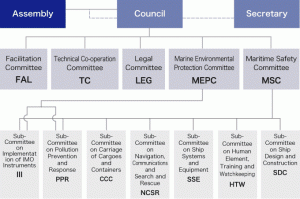
Assembly: This is the highest Governing Body of the Organization. It consists of all Member States, and it meets once every two years in regular sessions but may also meet in an extraordinary session if necessary. The Assembly is responsible for approving the work programme, voting on the budget and determining the financial arrangements of the Organization. The Assembly also elects the Council.
Council: The Council is elected by the Assembly for two-year terms beginning after each regular session of the Assembly. The Council is the Executive Organ of IMO and is responsible, under the Assembly, for supervising the work of the Organization. Between sessions of the Assembly, the Council performs all the functions of the Assembly, except the function of making recommendations to Governments on maritime safety and pollution prevention which is reserved for the Assembly by Article 15(j) of the Convention. Other functions of the Council are to:
- coordinate the activities of the organs of the Organization;
- consider the draft work programme and budget estimates of the Organization and submit them to the Assembly;
- receive reports and proposals of the Committees and other organs and submit them to the Assembly and the Member States, with comments and recommendations as appropriate;
- appoint the Secretary-General, subject to the approval of the Assembly;
- enter into agreements or arrangements concerning the relationship of the Organization with other organizations, subject to approval by the Assembly.
IMO has adopted amendments to expand the size of the IMO Council to 52. (read more here )
Maritime Safety Committee (MSC) – The MSC is the highest technical body of the Organization. It consists of all Member States. The functions of the Maritime Safety Committee are to “consider any matter within the scope of the Organization concerned with aids to navigation, construction and equipment of vessels, manning from a safety standpoint, rules for the prevention of collisions, handling of dangerous cargoes, maritime safety procedures and requirements, hydrographic information, log-books and navigational records, marine casualty investigations, salvage and rescue and any other matters directly affecting maritime safety”. The Committee is also required to provide machinery for performing any duties assigned to it by the IMO Convention or any duty within its scope of work which may be assigned to it by or under any international instrument and accepted by the Organization. It is also responsible for considering and submitting recommendations and guidelines on safety for possible adoption by the Assembly. The expanded MSC adopts amendments to conventions such as SOLAS and includes all Member States as well as those countries which are Party to conventions such as SOLAS even if they are not IMO Member States.
The Marine Environment Protection Committee (MEPC) – The MEPC, which consists of all Member States, is empowered to consider any matter within the scope of the Organization concerned with preventing and controlling pollution from ships. In particular, it is concerned with the adoption and amendment of conventions and other regulations and measures to ensure their enforcement. The MEPC was first established as a subsidiary body of the Assembly and raised to full constitutional status in 1985.
Sub-Committees: The MSC and MEPC are assisted in their work by a number of sub-committees which are also open to all Member States:
- Sub-Committee on Human Element, Training and Watchkeeping (HTW);
- Sub-Committee on Implementation of IMO Instruments (III);
- Sub-Committee on Navigation, Communications and Search and Rescue (NCSR);
- Sub-Committee on Pollution Prevention and Response (PPR);
- Sub-Committee on Ship Design and Construction (SDC);
- Sub-Committee on Ship Systems and Equipment (SSE); and
- Sub-Committee on Carriage of Cargoes and Containers (CCC).
Legal Committee – The Legal Committee is empowered to deal with any legal matters within the scope of the Organization. The Committee consists of all Member States of IMO. It was established in 1967 as a subsidiary body to deal with legal questions that arose after the Torrey Canyon disaster. The Legal Committee is also empowered to perform any duties within its scope which may be assigned by or under any other international instrument and accepted by the Organization.
Technical Cooperation Committee – The Technical Cooperation Committee is required to consider any matter within the scope of the Organization concerned with the implementation of technical cooperation projects for which the Organization acts as the executing or cooperating agency and any other matters related to the Organization’s activities in the technical cooperation field. The Technical Cooperation Committee consists of all Member States of IMO, was established in 1969 as a subsidiary body of the Council, and was institutionalized by means of an amendment to the IMO Convention, which entered into force in 1984.
Facilitation Committee – The Facilitation Committee was established as a subsidiary body of the Council in May 1972 and became fully institutionalised in December 2008 due to an amendment to the IMO Convention. It consists of all the Member States of the Organization and deals with IMO’s work in eliminating unnecessary formalities and “red tape” in international shipping by implementing all aspects of the Convention on Facilitation of International Maritime Traffic 1965 and any matter within the scope of the Organization concerned with the facilitation of international maritime traffic. In particular, in recent years, the Committee’s work, in accordance with the wishes of the Assembly, has been to ensure that the right balance is struck between maritime security and the facilitation of international maritime trade.
Secretariat – The Secretariat of IMO consists of the Secretary-General and some 300 international personnel based at the headquarters of the Organization in London. The Secretary-General of the Organization is Mr. Kitack Lim (Republic of Korea), who was appointed to the position with effect from 1 January 2016, for an initial four-year term.
IMO conventions
The majority of conventions adopted under the auspices of IMO or for which the Organization is otherwise responsible fall into three main categories.
The first group is concerned with maritime safety; the second with the prevention of marine pollution; and the third with liability and compensation, especially in relation to damage caused by pollution. Outside these major groupings are a number of other conventions dealing with facilitation, tonnage measurement, unlawful acts against shipping and salvage, etc. The industrial revolution of the eighteenth and nineteenth centuries and the upsurge in international commerce which followed resulted in the adoption of a number of international treaties related to shipping, including safety. The subjects covered included tonnage measurement, the prevention of collisions, signalling and others. By the end of the nineteenth century suggestions had even been made for the creation of a permanent international maritime body to deal with these and future measures. The plan was not put into effect, but international co-operation continued in the twentieth century, with the adoption of still more internationally-developed treaties. By the time IMO came into existence in 1958, several important international conventions had already been developed, including the International Convention for the Safety of Life at Sea of 1948, the International Convention for the Prevention of Pollution of the Sea by Oil of 1954 and treaties dealing with load lines and the prevention of collisions at sea.
IMO was made responsible for ensuring that the majority of these conventions were kept up to date. It was also given the task of developing new conventions as and when the need arose. The creation of IMO coincided with a period of tremendous change in world shipping and the Organization was kept busy from the start developing new conventions and ensuring that existing instruments kept pace with changes in shipping technology. It is now responsible for more than 50 international conventions and agreements and has adopted numerous protocols and amendments.
Adopting a convention
This is the part of the process with which IMO as an Organization is most closely involved. IMO has six main bodies concerned with the adoption or implementation of conventions. The Assembly and Council are the main organs, and the committees involved are the Maritime Safety Committee, Marine Environment Protection Committee, Legal Committee and the Facilitation Committee. Developments in shipping and other related industries are discussed by Member States in these bodies, and the need for a new convention or amendments to existing conventions can be raised in any of them.
Entry into force
The adoption of a convention marks the conclusion of only the first stage of a long process. Before the convention comes into force – that is, before it becomes binding upon Governments which have ratified it – it has to be accepted formally by individual Governments.
Signature, ratification, acceptance, approval and accession
The terms signature, ratification, acceptance, approval and accession refer to some of the methods by which a State can express its consent to be bound by a treaty.
Signature
Consent may be expressed by signature where:
- the treaty provides that signature shall have that effect
- it is otherwise established that the negotiating States were agreed that signature should have that effect
- the intention of the State to give that effect to signature appears from the full powers of its representatives or was expressed during the negotiations (Vienna Convention on the Law of Treaties, 1969, Article 12.1).
A State may also sign a treaty “subject to ratification, acceptance or approval”. In such a situation, signature does not signify the consent of a State to be bound by the treaty, although it does oblige the State to refrain from acts which would defeat the object and purpose of the treaty until such time as it has made its intention clear not to become a party to the treaty (Vienna Convention on the Law of Treaties, Article 18(a)).
Signature subject to ratification, acceptance or approval
Most multilateral treaties contain a clause providing that a State may express its consent to be bound by the instrument by signature subject to ratification. In such a situation, signature alone will not suffice to bind the State, but must be followed up by the deposit of an instrument of ratification with the depositary of the treaty. This option of expressing consent to be bound by signature subject to ratification, acceptance or approval originated in an era when international communications were not instantaneous, as they are today. It was a means of ensuring that a State representative did not exceed their powers or instructions with regard to the making of a particular treaty. The words “acceptance” and “approval” basically mean the same as ratification, but they are less formal and non-technical and might be preferred by some States which might have constitutional difficulties with the term ratification. Many States nowadays choose this option, especially in relation to multinational treaties, as it provides them with an opportunity to ensure that any necessary legislation is enacted and other constitutional requirements fulfilled before entering into treaty commitments. The terms for consent to be expressed by signature subject to acceptance or approval are very similar to ratification in their effect. This is borne out by Article 14.2 of the Vienna Convention on the Law of Treaties which provides that “the consent of a State to be bound by a treaty is expressed by acceptance or approval under conditions similar to those which apply to ratification.”
Accession
Most multinational treaties are open for signature for a specified period of time. Accession is the method used by a State to become a party to a treaty which it did not sign whilst the treaty was open for signature. Technically, accession requires the State in question to deposit an instrument of accession with the depositary. Article 15 of the Vienna Convention on the Law of Treaties provides that consent by accession is possible where the treaty so provides, or where it is otherwise established that the negotiating States were agreed or subsequently agreed that consent by accession could occur.
Amendment
Technology and techniques in the shipping industry change very rapidly these days. As a result, not only are new conventions required but existing ones need to be kept up to date. For example, the International Convention for the Safety of Life at Sea (SOLAS), 1960 was amended six times after it entered into force in 1965 – in 1966, 1967, 1968, 1969, 1971 and 1973. In 1974 a completely new convention was adopted incorporating all these amendments (and other minor changes) and has itself been modified on numerous occasions. In early conventions, amendments came into force only after a percentage of Contracting States, usually two thirds, had accepted them. This normally meant that more acceptances were required to amend a convention than were originally required to bring it into force in the first place, especially where the number of States which are Parties to a convention is very large. This percentage requirement in practice led to long delays in bringing amendments into force. To remedy the situation a new amendment procedure was devised in IMO. This procedure has been used in the case of conventions such as the Convention on the International Regulations for Preventing Collisions at Sea, 1972, the International Convention for the Prevention of Pollution from Ships, 1973 and SOLAS 1974, all of which incorporate a procedure involving the “tacit acceptance” of amendments by States.
Instead of requiring that an amendment shall enter into force after being accepted by, for example, two thirds of the Parties, the “tacit acceptance” procedure provides that an amendment shall enter into force at a particular time unless before that date, objections to the amendment are received from a specified number of Parties. In the case of the 1974 SOLAS Convention, an amendment to most of the Annexes (which constitute the technical parts of the Convention) is `deemed to have been accepted at the end of two years from the date on which it is communicated to Contracting Governments…’ unless the amendment is objected to by more than one third of Contracting Governments, or Contracting Governments owning not less than 50 per cent of the world’s gross merchant tonnage. This period may be varied by the Maritime Safety Committee with a minimum limit of one year. As was expected the “tacit acceptance” procedure has greatly speeded up the amendment process. Amendments enter into force within 18 to 24 months, generally Compared to this, none of the amendments adopted to the 1960 SOLAS Convention between 1966 and 1973 received sufficient acceptances to satisfy the requirements for entry into force.
Enforcement
The enforcement of IMO conventions depends upon the Governments of Member Parties. Contracting Governments enforce the provisions of IMO conventions as far as their own ships are concerned and also set the penalties for infringements, where these are applicable. They may also have certain limited powers in respect of the ships of other Governments. In some conventions, certificates are required to be carried on board ship to show that they have been inspected and have met the required standards. These certificates are normally accepted as proof by authorities from other States that the vessel concerned has reached the required standard, but in some cases further action can be taken. The 1974 SOLAS Convention, for example, states that “the officer carrying out the control shall take such steps as will ensure that the ship shall not sail until it can proceed to sea without danger to the passengers or the crew”. This can be done if “there are clear grounds for believing that the condition of the ship and its equipment does not correspond substantially with the particulars of that certificate”.
An inspection of this nature would, of course, take place within the jurisdiction of the port State. But when an offence occurs in international waters, the responsibility for imposing a penalty rests with the flag State. Should an offence occur within the jurisdiction of another State, however, that State can either cause proceedings to be taken in accordance with its own law or give details of the offence to the flag State so that the latter can take appropriate action. Under the terms of the 1969 Convention Relating to Intervention on the High Seas, Contracting States are empowered to act against ships of other countries which have been involved in an accident or have been damaged on the high seas if there is a grave risk of oil pollution occurring as a result. The way in which these powers may be used are very carefully defined, and in most conventions the flag State is primarily responsible for enforcing conventions as far as its own ships and their personnel are concerned. The Organization itself has no powers to enforce conventions. However, IMO has been given the authority to vet the training, examination and certification procedures of Contracting Parties to the International Convention on Standards of Training, Certification and Watchkeeping for Seafarers (STCW), 1978. This was one of the most important changes made in the 1995 amendments to the Convention which entered into force on 1 February 1997. Governments have to provide relevant information to IMO’s Maritime Safety Committee which will judge whether or not the country concerned meets the requirements of the Convention.
Relationship between Conventions and interpretation
Some subjects are covered by more than one Treaty. The question then arises which one prevails. The Vienna Convention on the Law of Treaties provides in Article 30 for rules regarding the relationship between successive treaties relating to the same subject-matter. Answers to questions regarding the interpretation of Treaties can be found in Articles 31, 32 and 33 of the Vienna Convention on the Law of Treaties. A Treaty shall be interpreted in good faith in accordance with the ordinary meaning to be given to the treaty’s terms in their context and in the light of its object and purpose. When a Treaty has been authenticated in two or more languages, the text is equally authoritative in each language unless the treaty provides or the parties agree that, in case of divergence, a particular text shall prevail.
Uniform law and conflict of law rules
A substantive part of maritime law has been made uniform in international Treaties. However, not every State is Party to all Conventions and the existing Conventions do not always cover all questions regarding a specific subject. In those cases conflict of law rules are necessary to decide which national law applies. These conflict of law rules can either be found in a Treaty or, in most cases, in national law.

Where can I obtain the text of the IMO conventions?
Texts of IMO Conventions can be purchased via the Publications section. Texts can also be found in national public libraries and in the libraries of maritime training institutes. For legal purposes, only authentic texts and certified copies of Conventions and amendments should be used. Please note that texts of IMO Conventions found on external websites may not be up to date. You should also contact your national maritime Administration. Conventions ratified by a Government are adopted into national legislation and the national version will be available through the usual channels (official bulletins, etc).
Partnerships and Projects
The Department of Partnerships and Projects (DPP), established by the IMO Secretary-General Mr Kitack Lim, serves as the gateway for developing partnership opportunities with a wide range of external partners, including IMO Member States, UN agencies, financial institutions, NGOs, IGOs and the private sector.
IMO has a long and successful track record of matching the requirements of developing countries, including Least Developing Countries and Small Island Developing States, with resources made available by a range of governmental, institutional and corporate donors.
Building on this – and working with the Technical Cooperation Division and other Divisions within IMO – DPP promotes a culture of collaboration and innovation, creating broader engagement and partnerships with maritime and ocean-related stakeholders. The Department further implements long-term projects:
DPP Project Factsheets
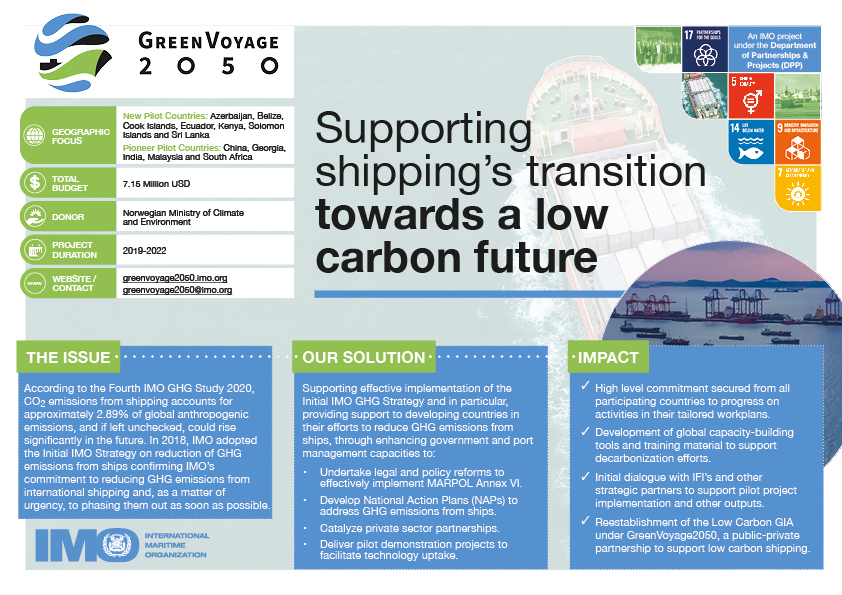 |
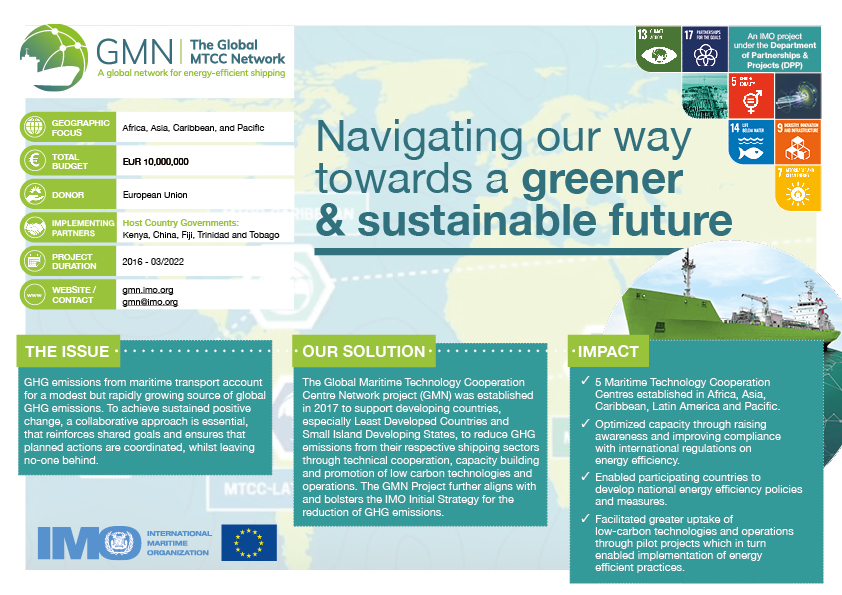 |
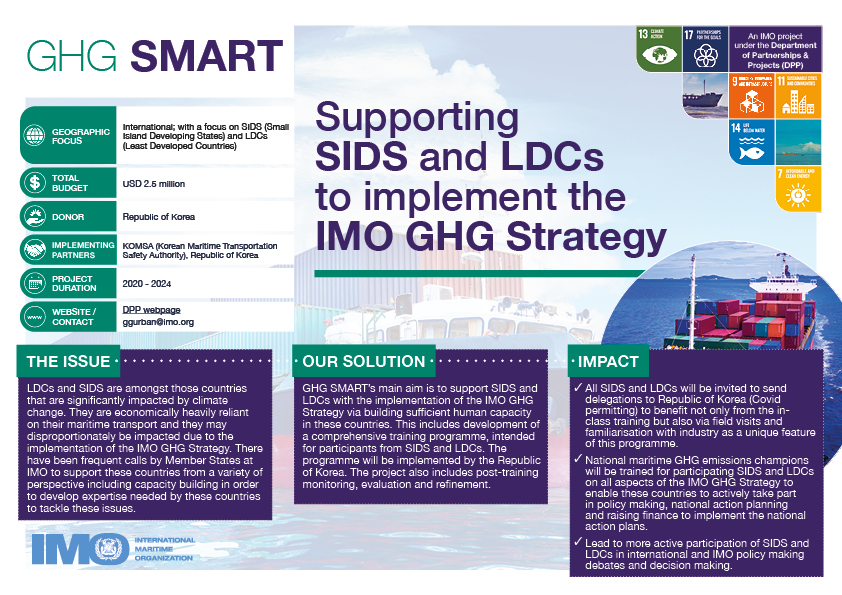 |
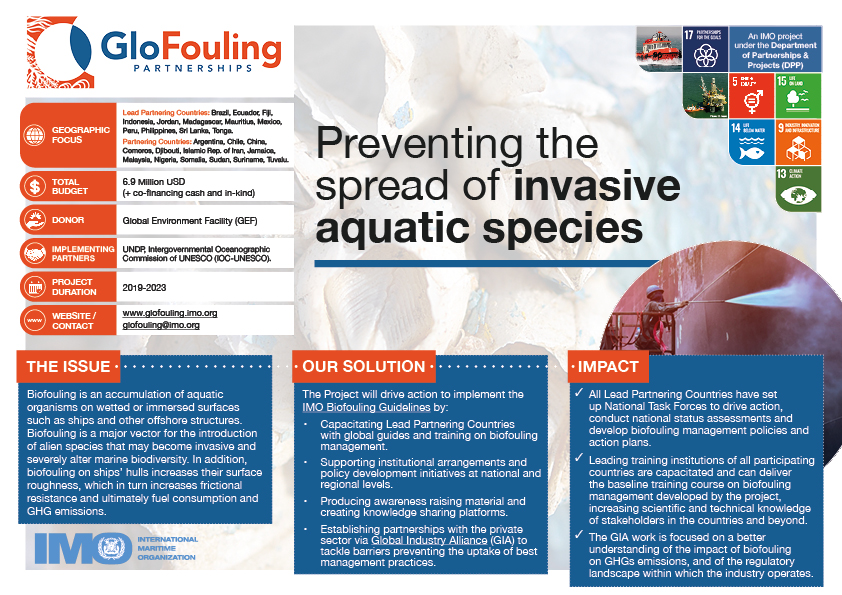 |
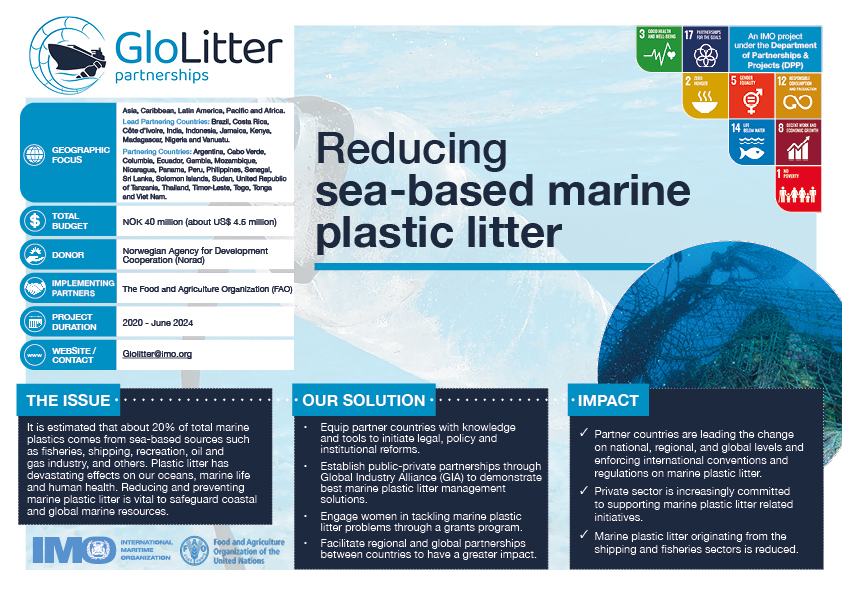 |
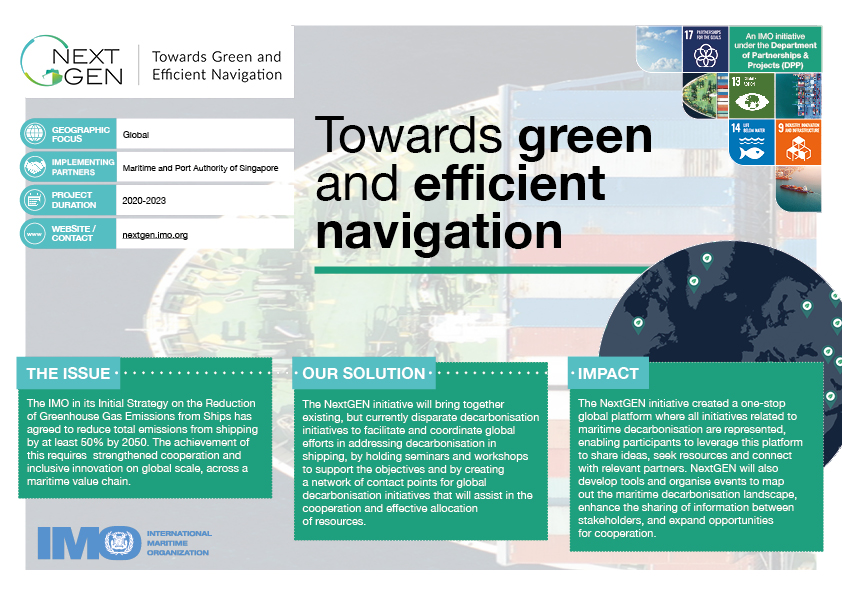 |
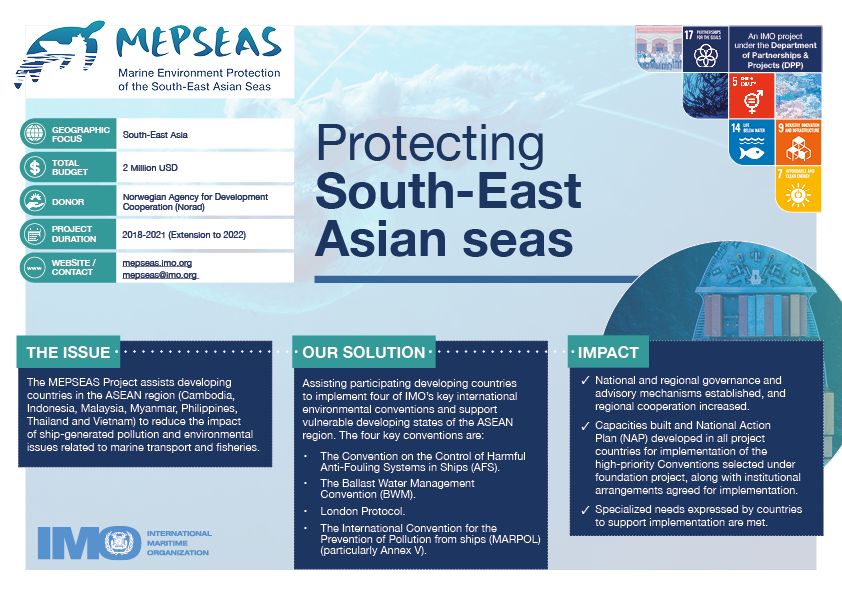 |
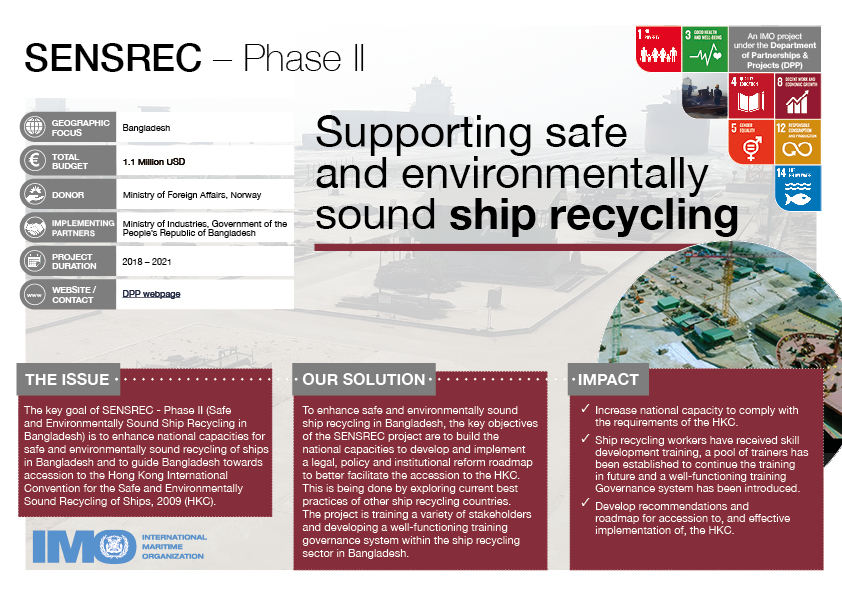 |
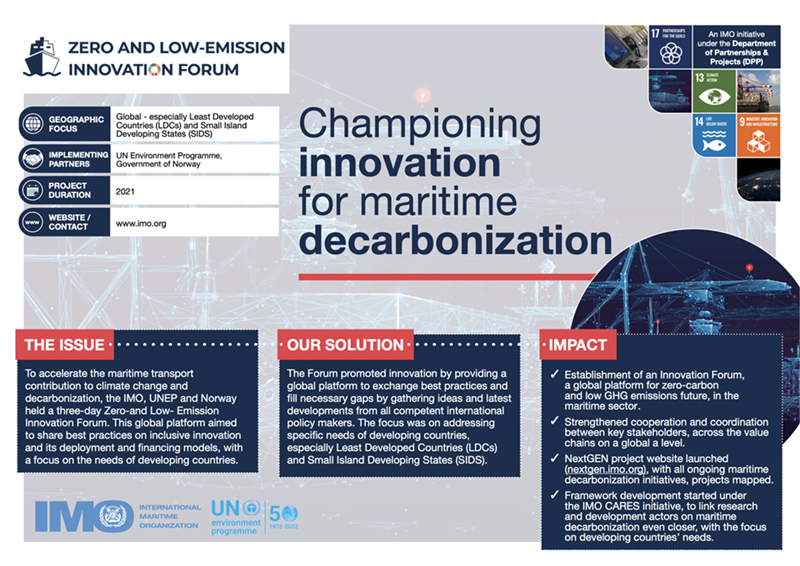 |
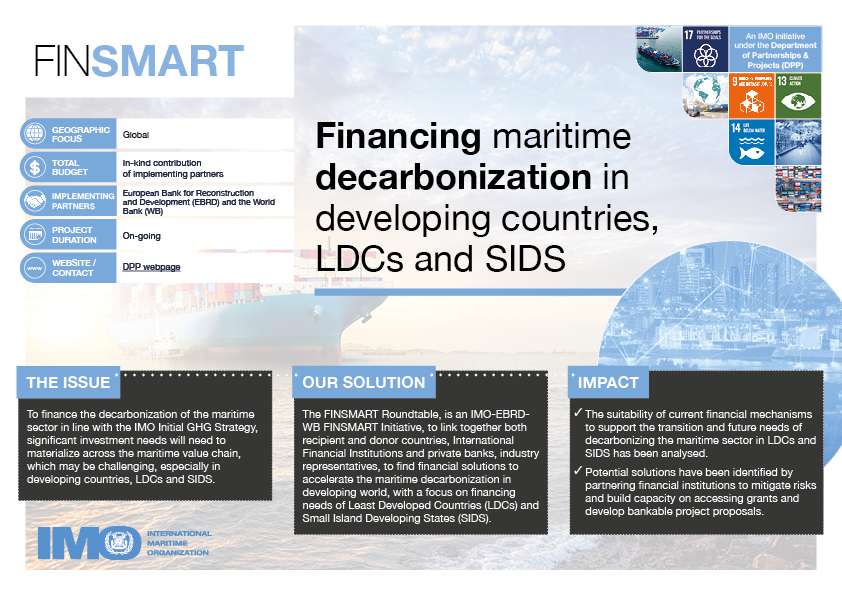 |
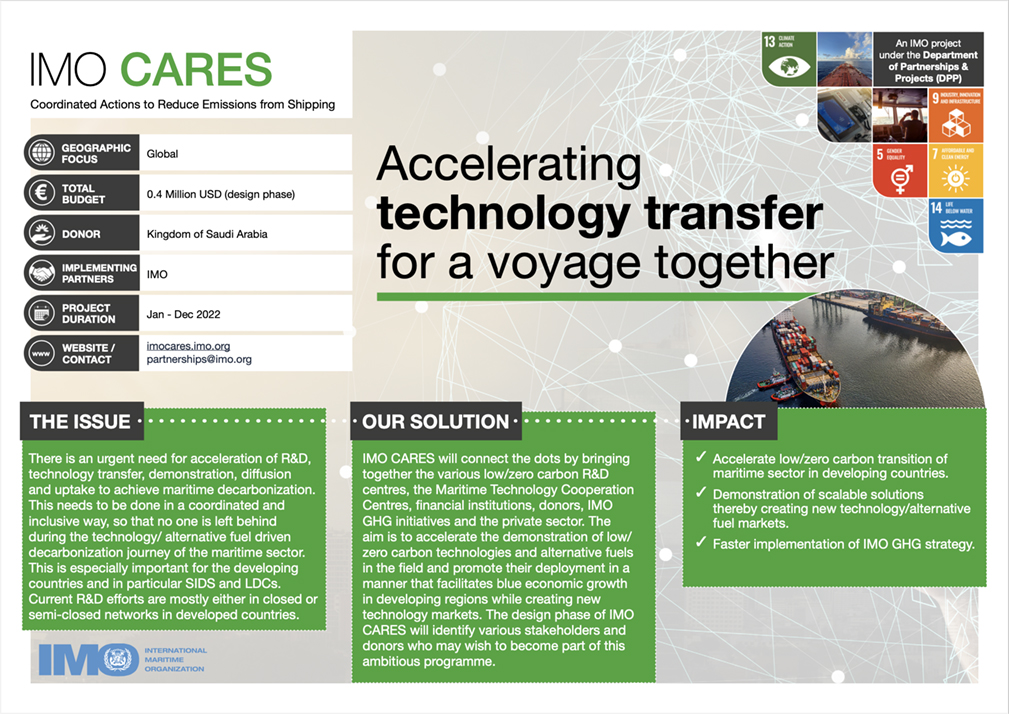 |
The Department began operating on 1 March 2020 to increase the existing portfolio of donor-supported long-term projects supporting the technical cooperation objectives of IMO. The establishment of DPP reflects the strong and continuing commitment of IMO to helping its Member States achieve the 2030 Agenda for Sustainable Development, with its 17 Sustainable Development Goals, and implement the Organization’s regulatory framework.
How can I contact IMO?
Individuals wishing to raise an issue at IMO, or wanting information on implementation of IMO instruments in their country or on their vessel, should approach their national maritime administration or appropriate IGO or NGO.
To contact IMO Secretariat, see the Contact Us page.
You can also follow us on Facebook and Twitter.
Source: IMO

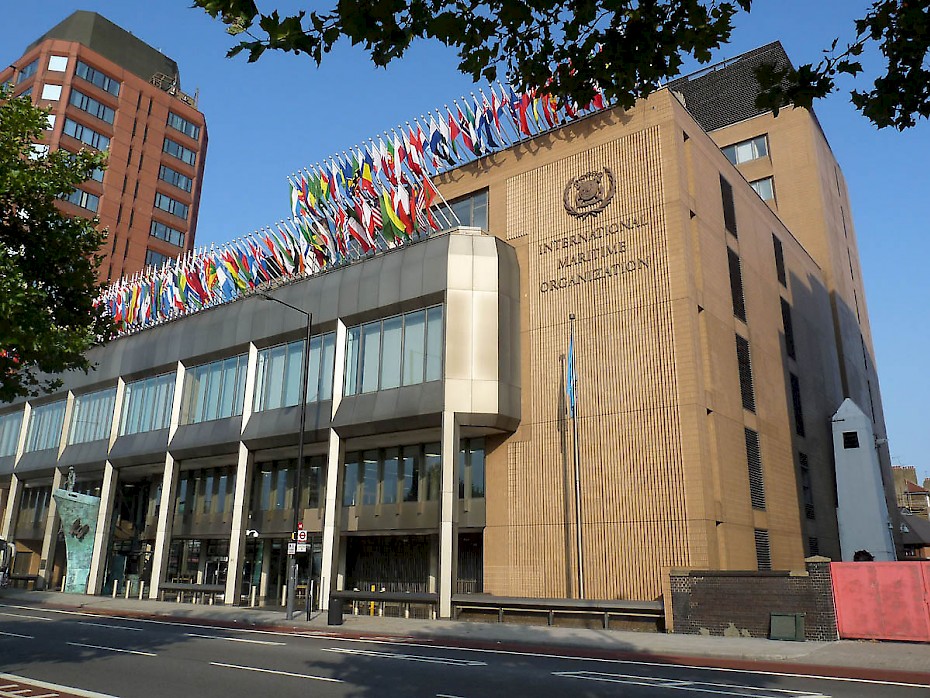
I am a student of BAK College. The recent paper competition gave me a lot of headaches, and I checked a lot of information. Finally, after reading your article, it suddenly dawned on me that I can still have such an idea. grateful. But I still have some questions, hope you can help me.
I may need your help. I tried many ways but couldn’t solve it, but after reading your article, I think you have a way to help me. I’m looking forward for your reply. Thanks.
Thank you very much for sharing, I learned a lot from your article. Very cool. Thanks.
I don’t think the title of your article matches the content lol. Just kidding, mainly because I had some doubts after reading the article.
Can you be more specific about the content of your article? After reading it, I still have some doubts. Hope you can help me.
Your point of view caught my eye and was very interesting. Thanks. I have a question for you.